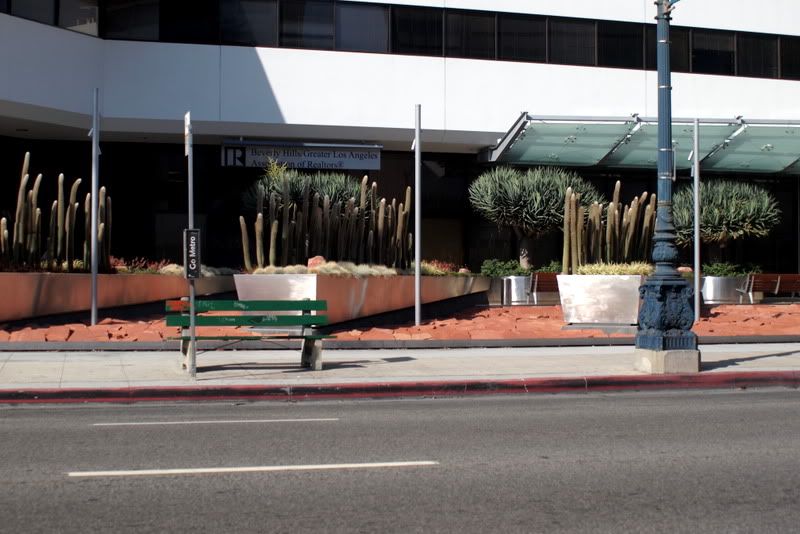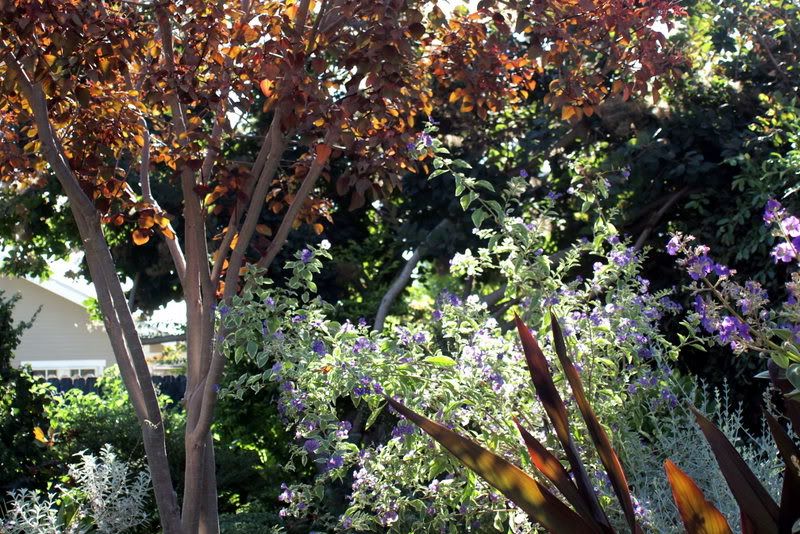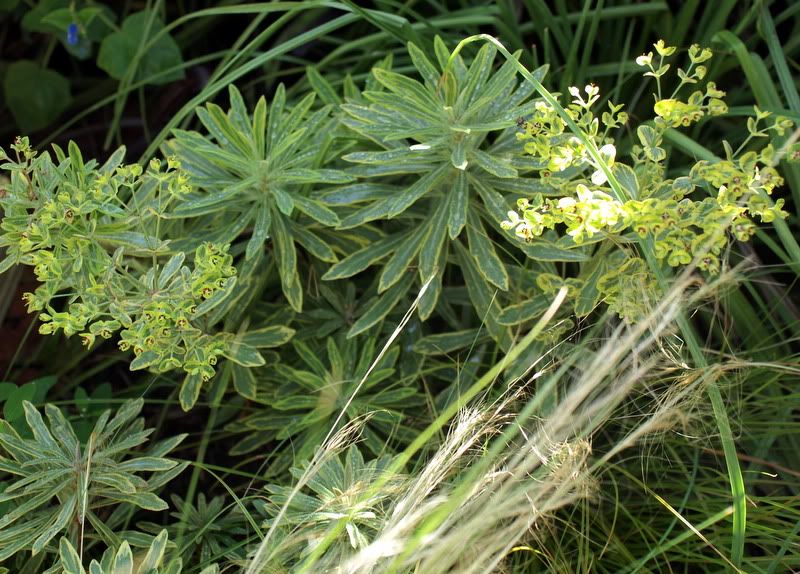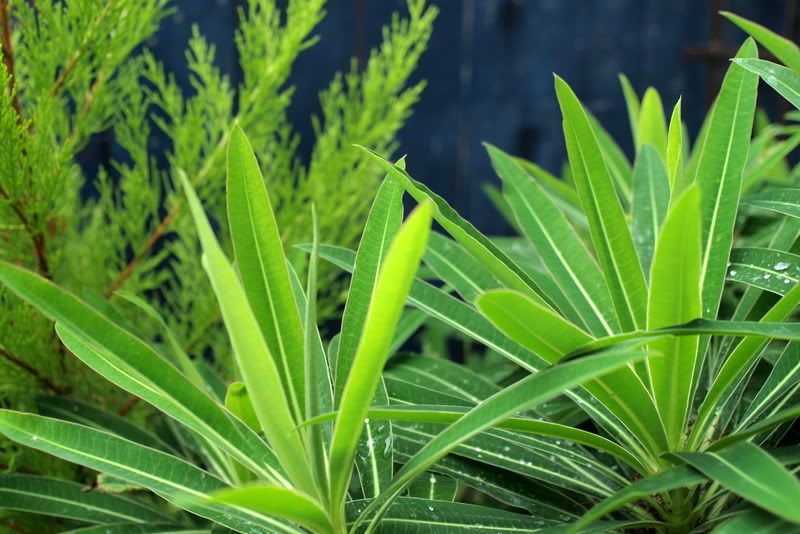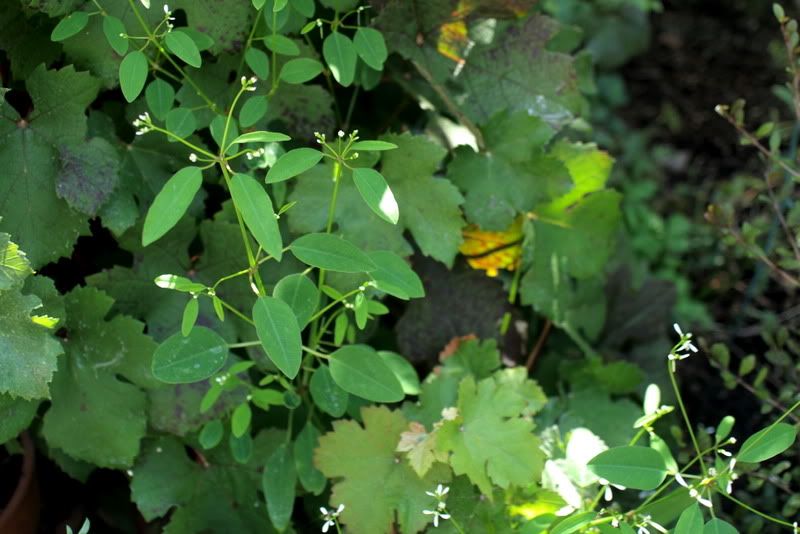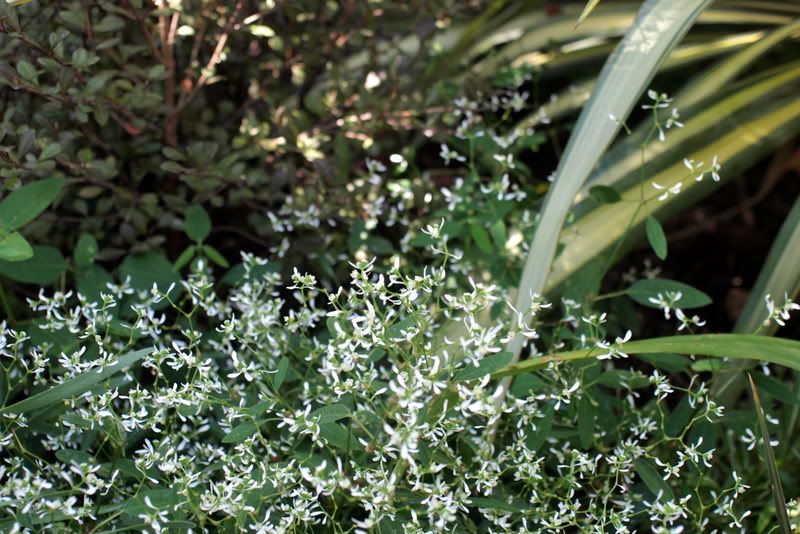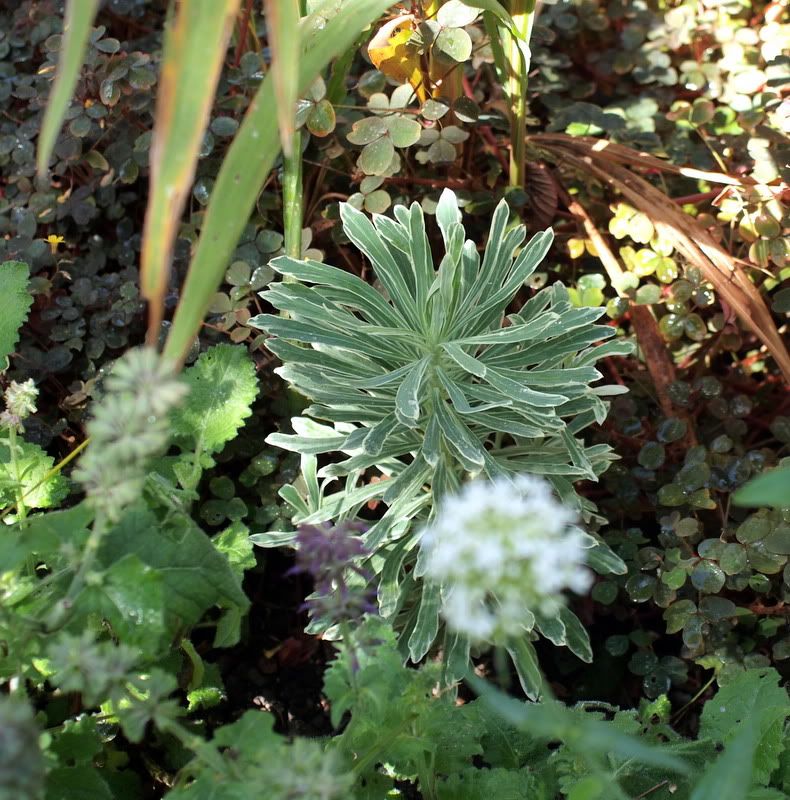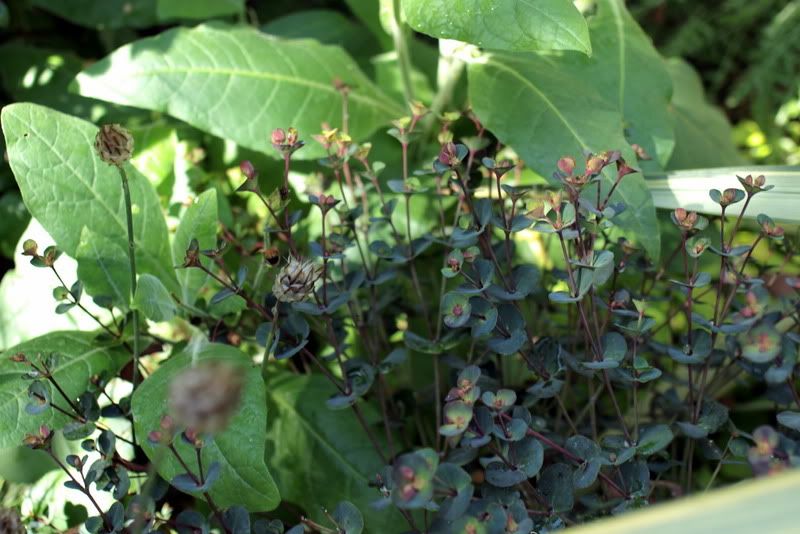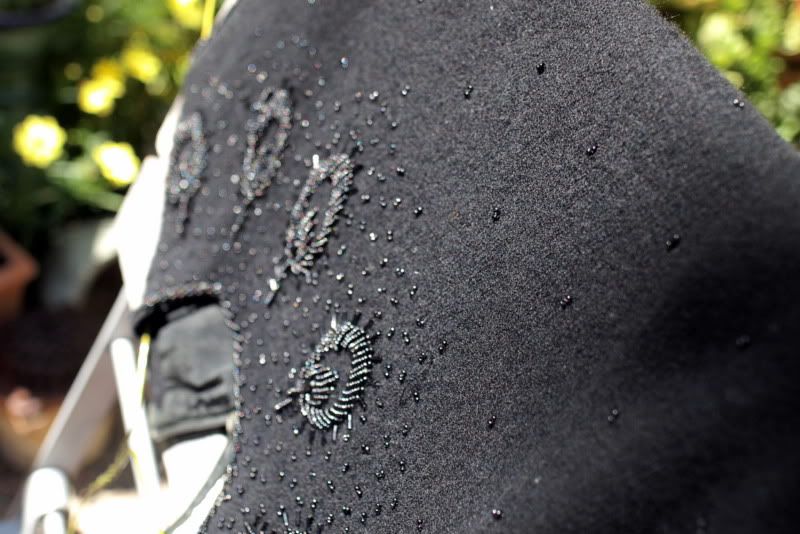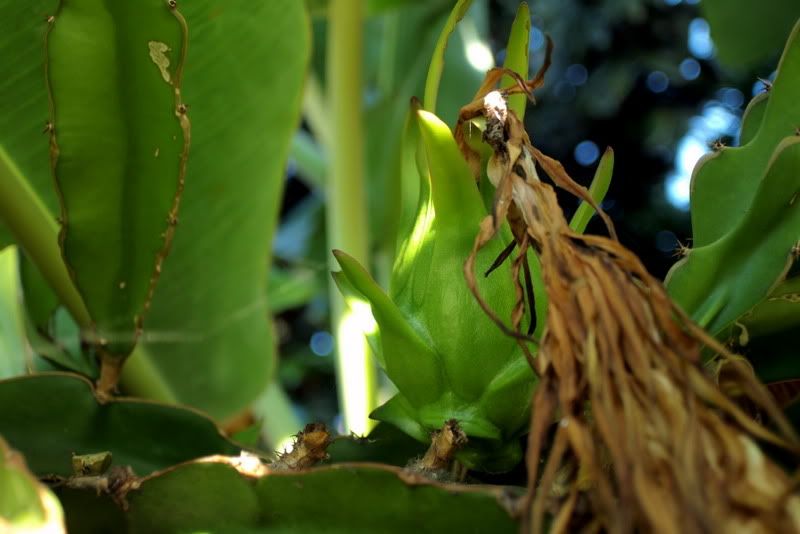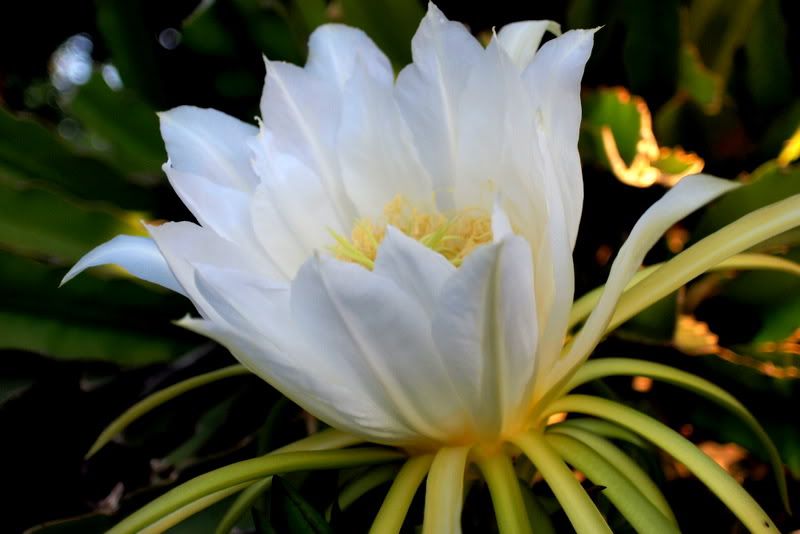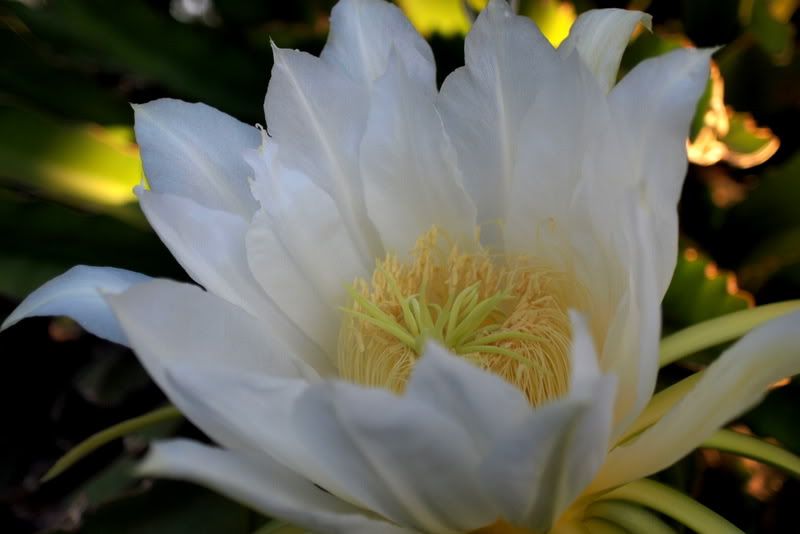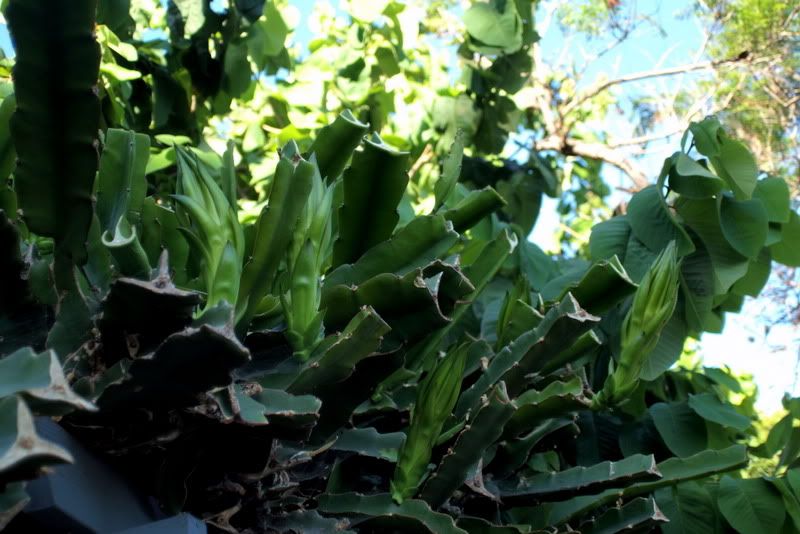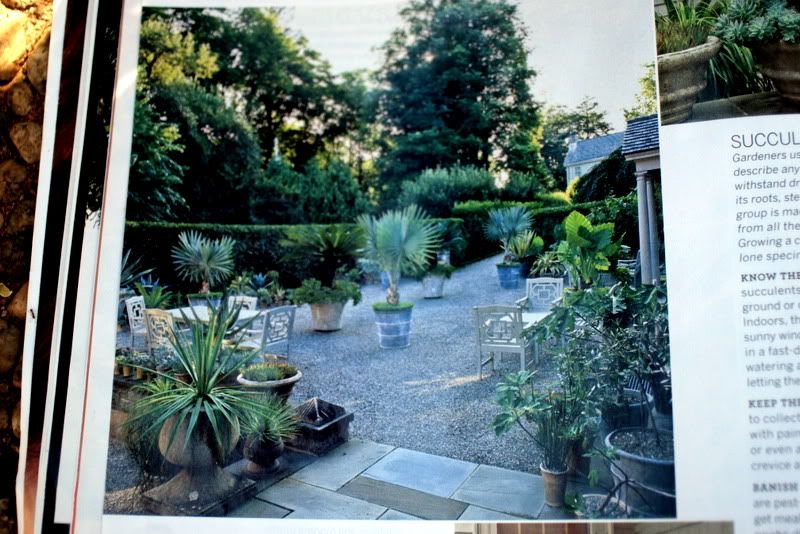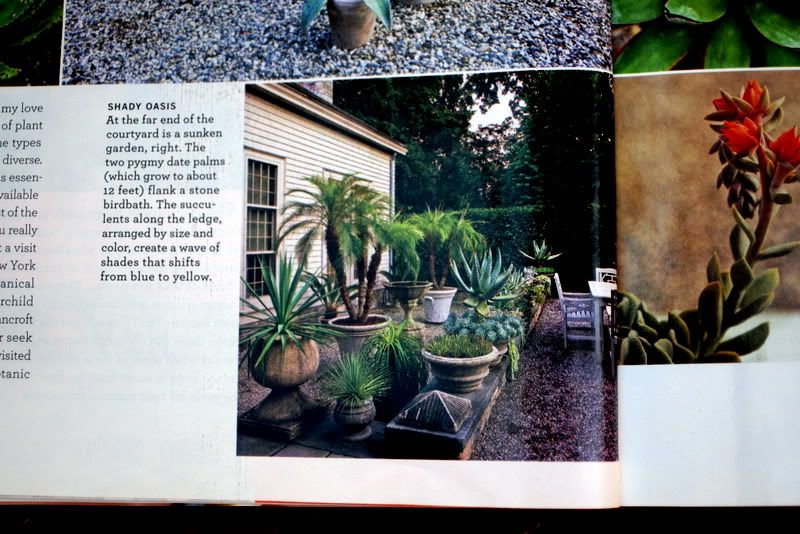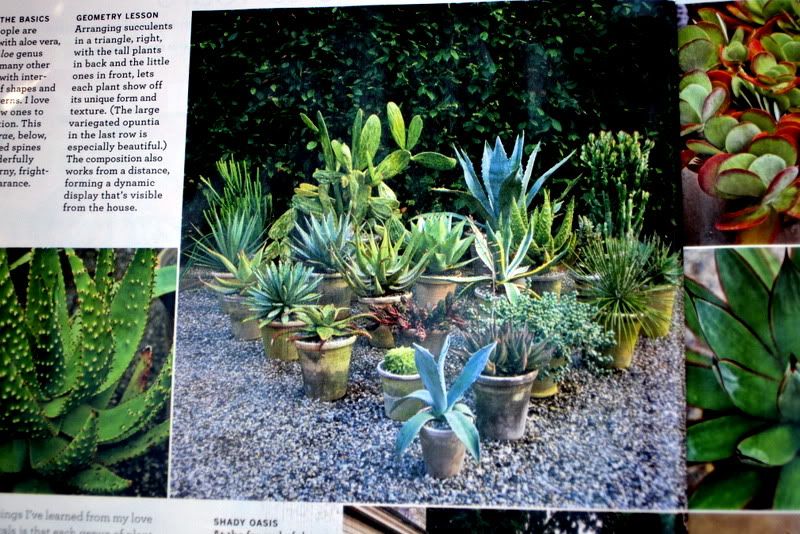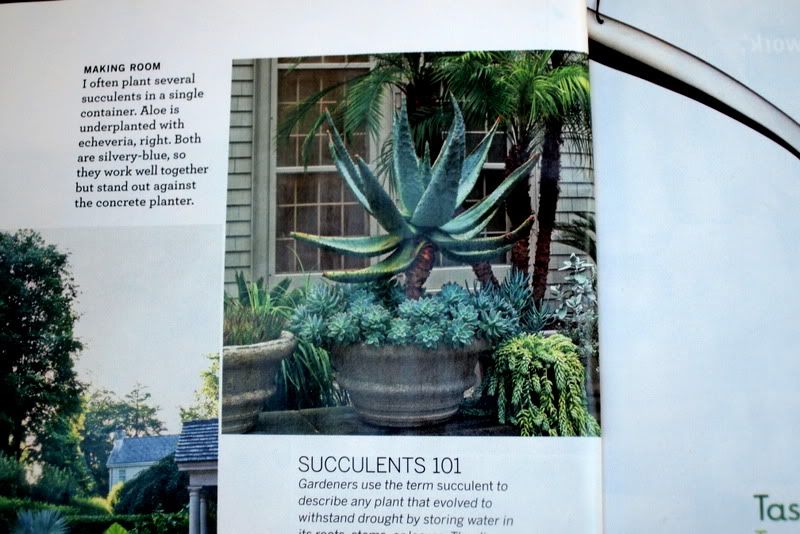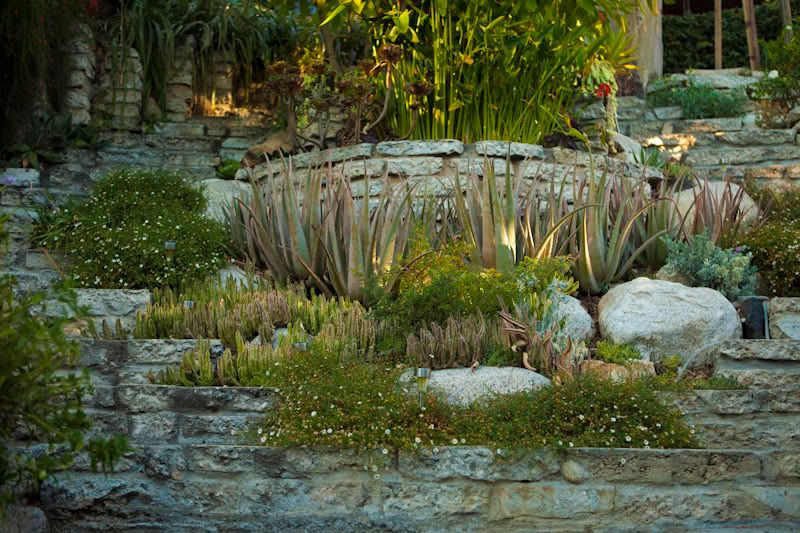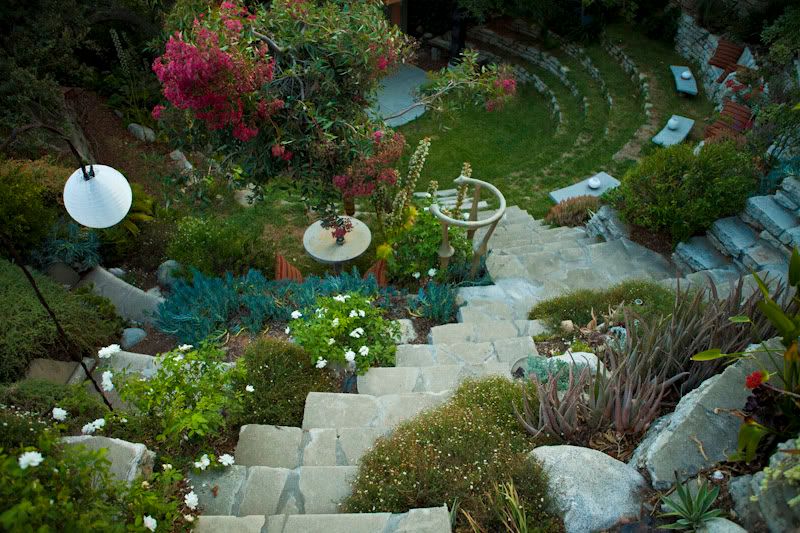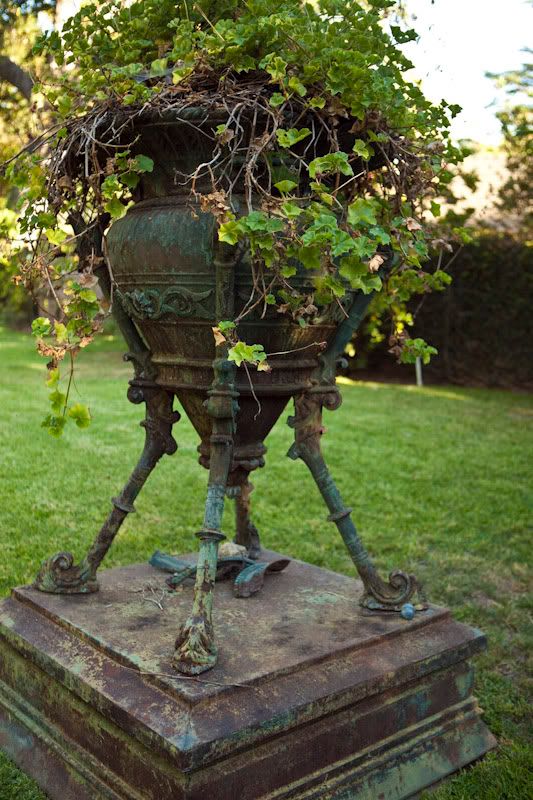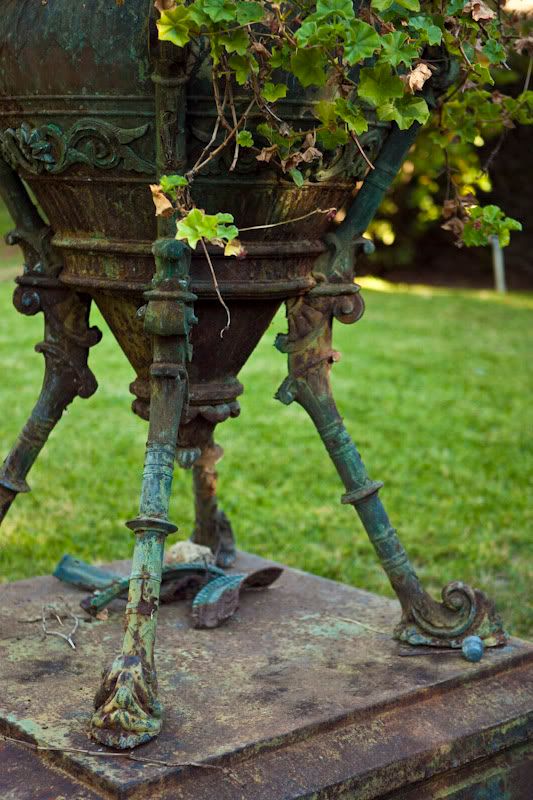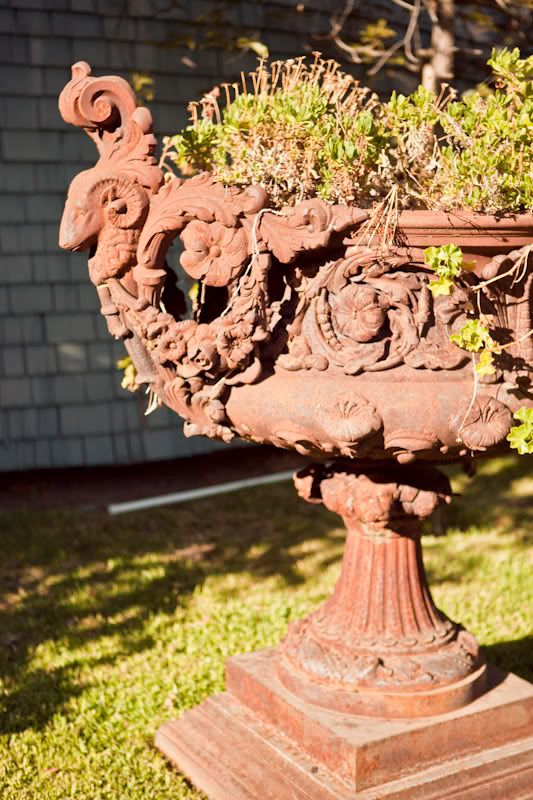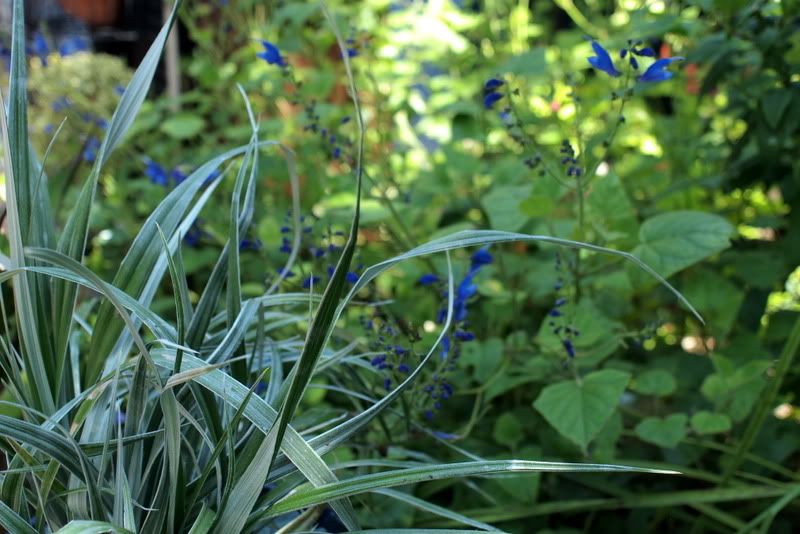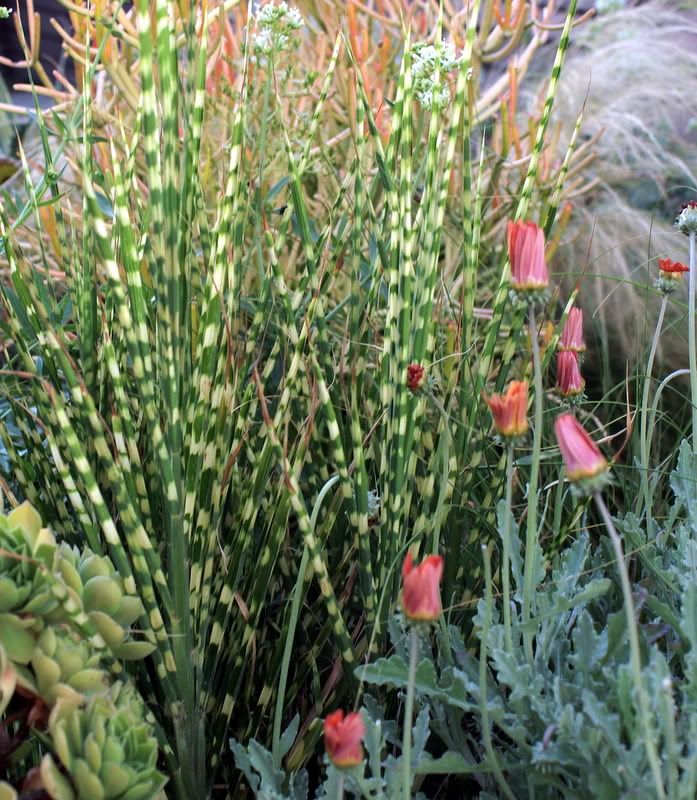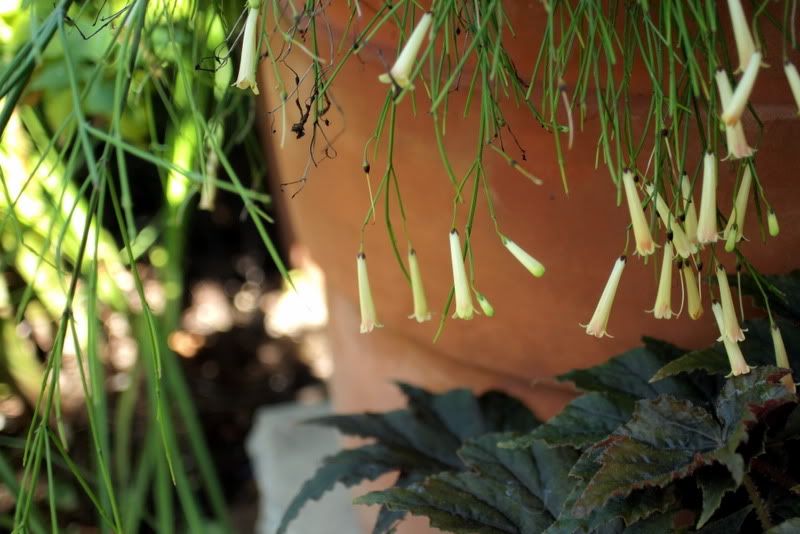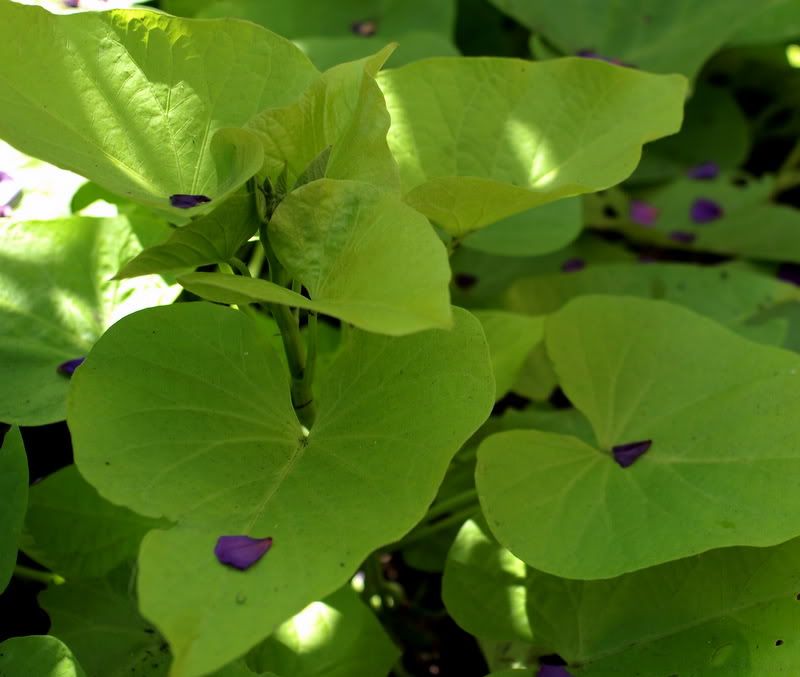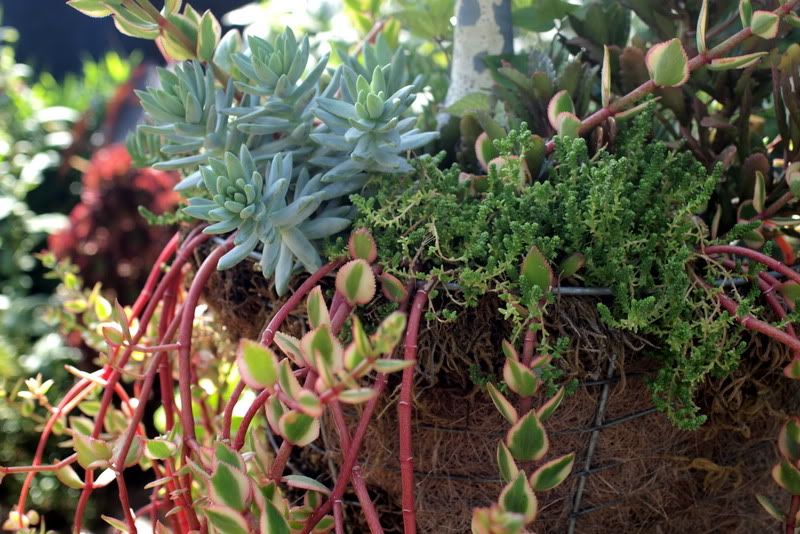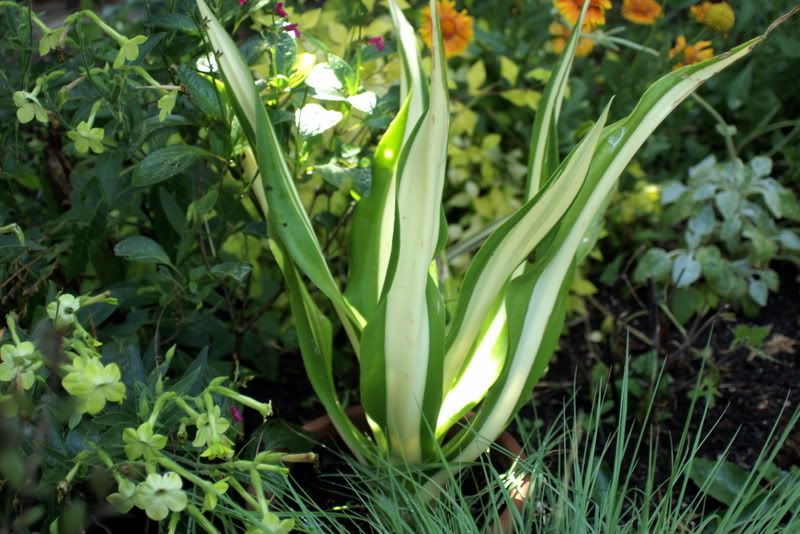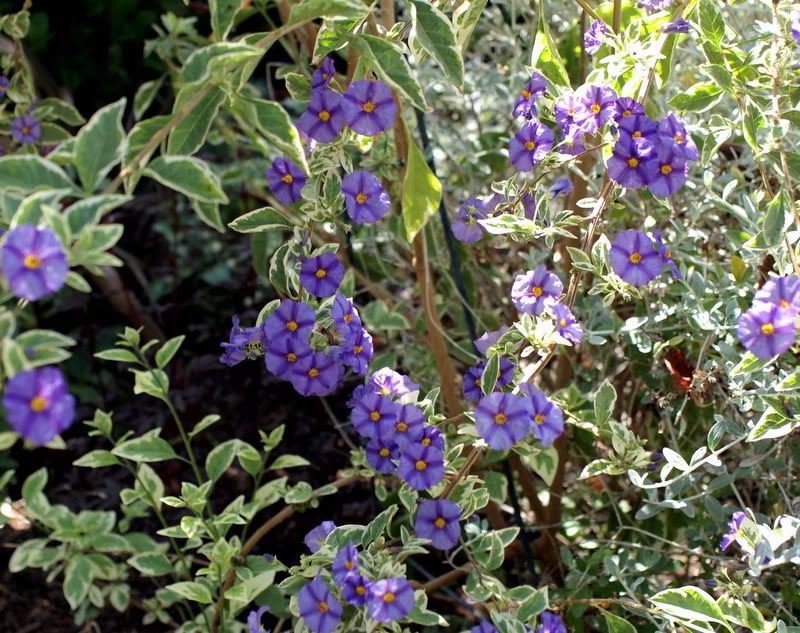My aunts and cousins called my mom, who called me. Our bakery was back in business after what turned out to be just a brief hiatus of a couple years. The owner decided early retirement was not the answer, reopened his bakery at a new location, and started cranking out his Italian family recipes again. All is well with the world once more. The shelves were empty but for trays and trays of the house favorite, cannoli, by the time I got there mid-afternoon, yet there was still a long line at the door.

The bakery is 3/4 of the way to the South Coast Botanic Garden, which I’ve been meaning to pay a visit ever since the July issue of Pacific Horticulture profiled the SCBG and mentioned their enormous banyan tree grove of Moreton Bay Figs, Ficus macrophylla, tucked deep into the garden, unbeknownst to me. The last time I visited the SCBG I had small kids in tow, and no wonder I never consulted their map or perused their garden in any kind of orderly fashion. Today’s agenda, the bakery reopening coupled with a visit to the SCBG, was sliding into place like beads on a string.
Banyan trees have the barked equivalent of “washboard ab’s,” seriouslycut. Sinuously sculptural. Latent arboreal lust surges forth at the sight of these towering, beautifully muscled giants that fling their enormous branches low and horizontal and ripple their massive roots through the forest floor like sea serpents.
Walking amongst a grove of these leviathans was worth the trip alone, but the cactus and succulent garden was much better than I remembered too. It was a hot, solitary, dusty tramp over pathways that dipped and billowed from methane settlement, this whole site being former landfill. What bliss. Though I did eventually bump into a film crew deep in the garden, which broke the spell just a little.

Plant labeling was overall very good. A botanic garden is bound to have much of interest, even in mid-August, and the SCBG didn’t disappoint.

Dicliptera suberecta, the Uruguayan Firecracker Plant. A beautiful, drought-tolerant subshrub, but too much for my small garden to handle. Here it has the room it needs to sprawl.

A shrubby native euphorbia, E. xantii, Baja Spurge, billowing like baby’s breath in the cactus garden.
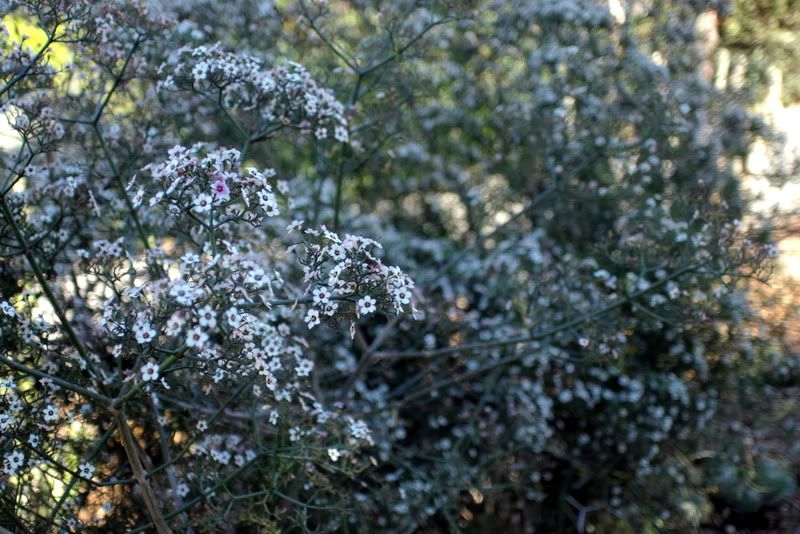
I’m guessing this bromeliad winding around the base of this palm is an aechmea, possibly A. recurvata, but no name card for this one.
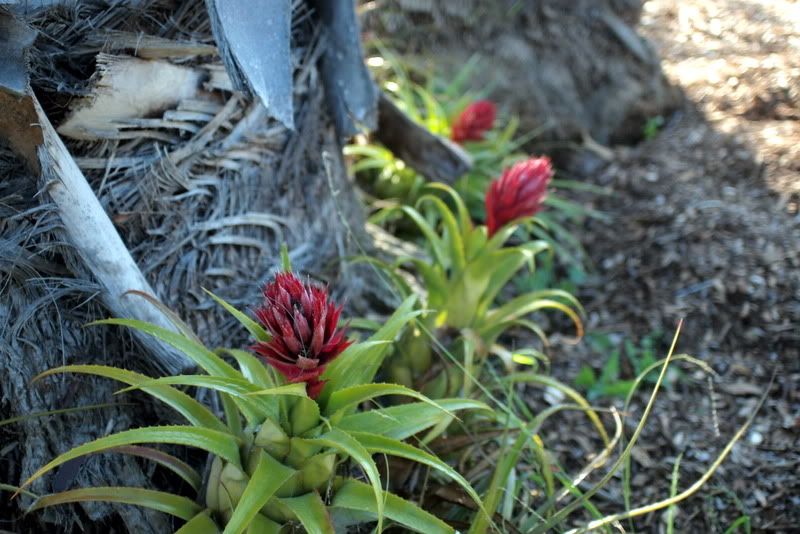
Detail of an agave labeled A. toumeyana, a giant, bumpy, whiskery agave approximately 4×6. Plant Delights describes this agave’s habit as forming “a splendid tight colony resembling overweight hedgehogs at a feeding trough.” Zone 7-9. The variety Agave toumeyana var. bella is supposedly more compact, growing as a singleton rather than a herd of hedgehogs.
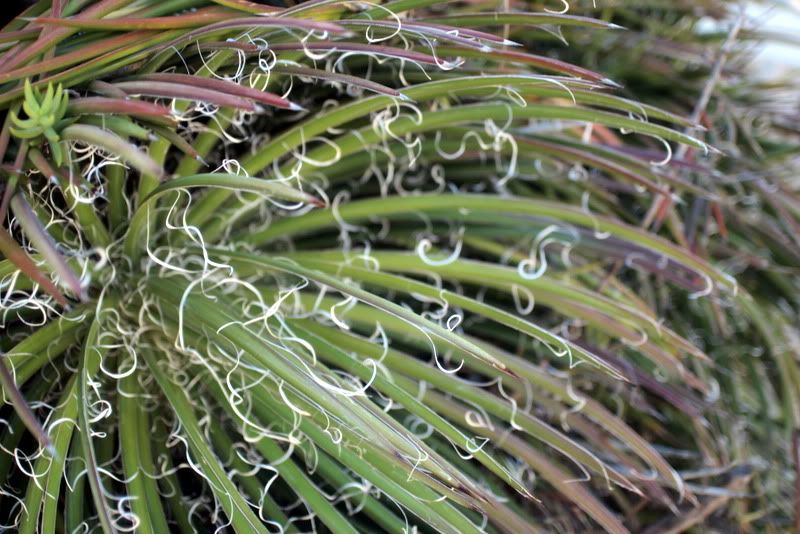
Pumpkin. By this time, it occurs to me that sitting on the passenger seat of a closed-up car in the hot sun these past two hours might not be the best thing for my cannolis.
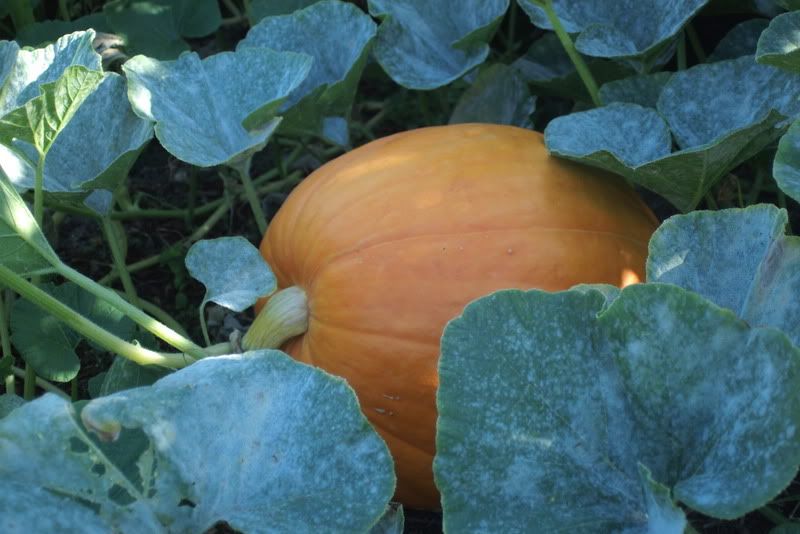
So I headed for the exit, but was waylaid by lush vines of Dolichos lablab. (My one dolichos at home has withered away this August.)
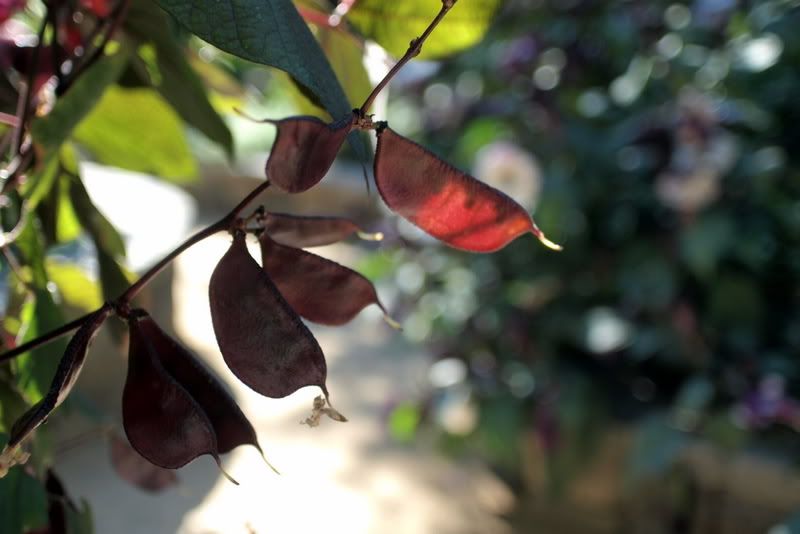
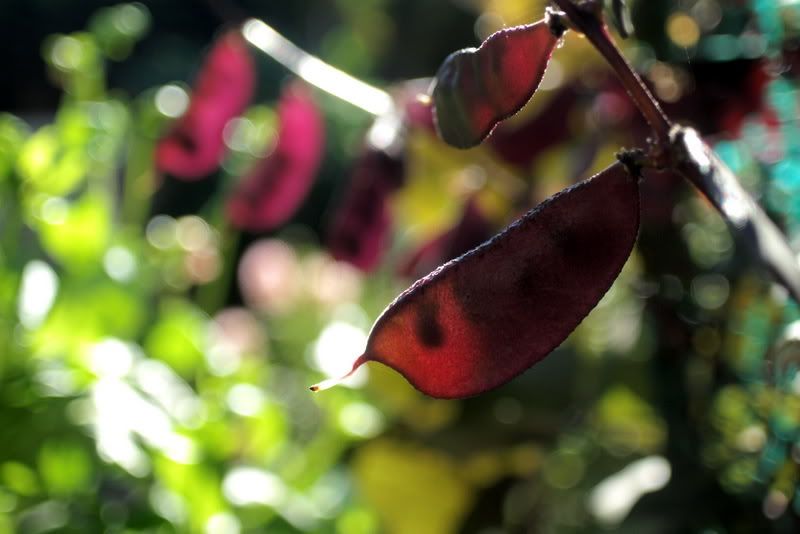
Scent was pouring out of this double datura, the jimson weed, perfuming quite a large area, making it impossible to leave.
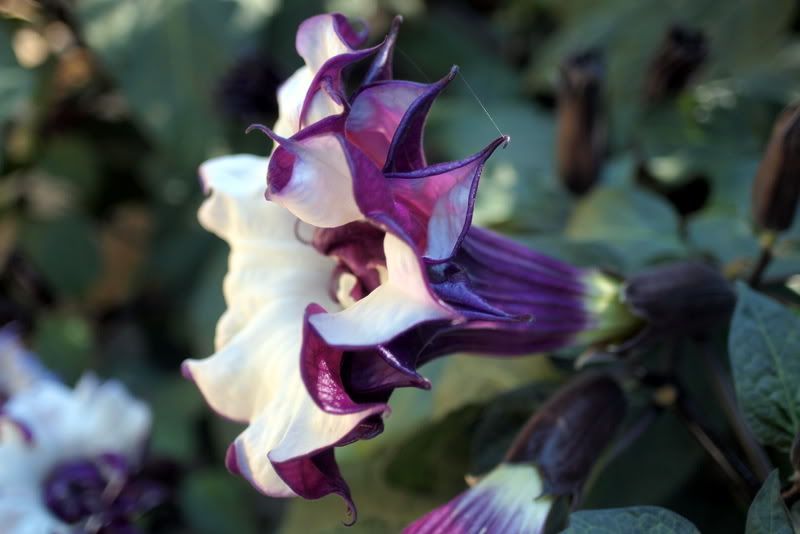
I did put the windshield shade up after all, so the cannolis were probably fine.
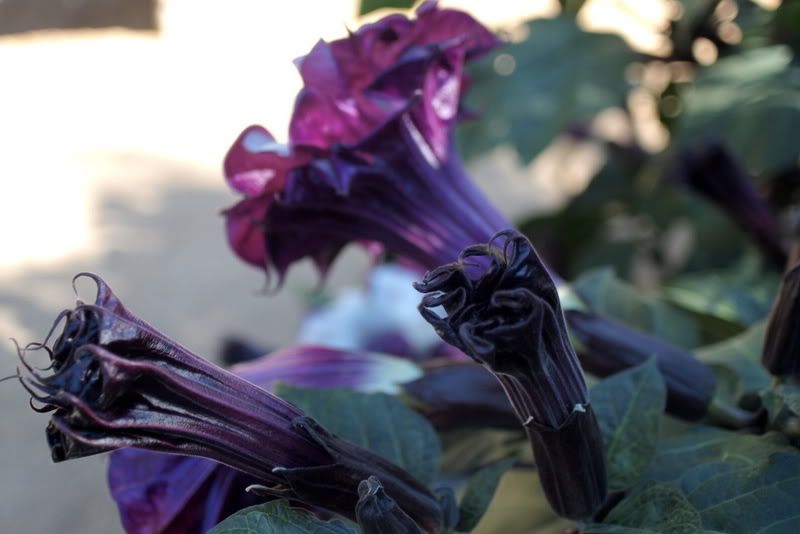
I didn’t know it, but my visit coincided with their dahlia festival. Where is that exit anyway?

The exit now in sight, but there’s a little fuchsia dell just off the gift store. Lots of shrubby species fuchsias, most of them labeled mite-resistant, though this one lacked ID.
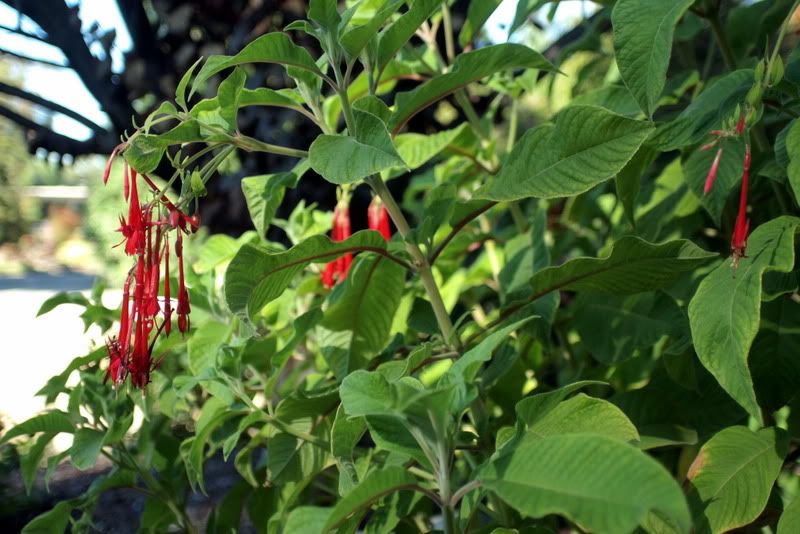
Almost there, but then there’s this beautiful shrub, spotted in a parking lot median as I was leaving. The car just in sight, cannolis probably dripping off the seat by now, but this shrub had to be investigated. Amazingly fresh looking for August. Nasturtium-like flowers, bi-lobed leaves. Maybe a bauhinia? Very graceful, scandent habit. A little Internet research later brought up Bauhinia galpinii, The Red Orchid Bush, a sprawler to over 20 feet.
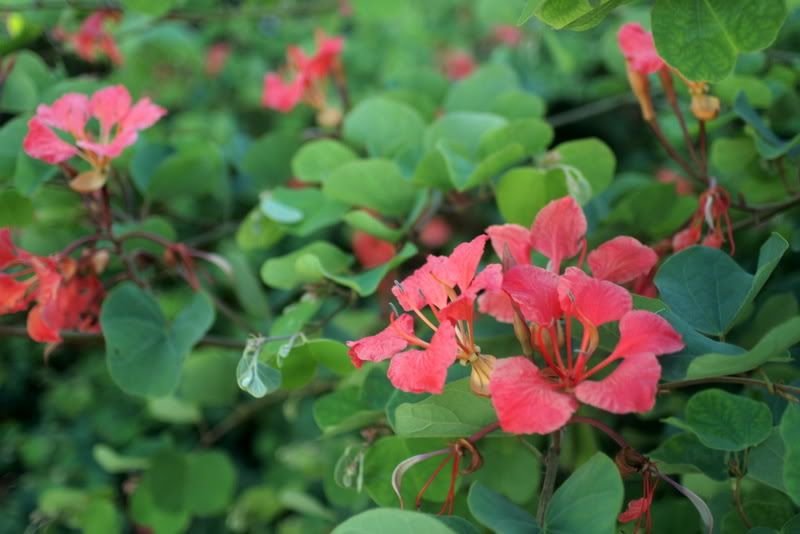
To paraphrase The Godfather (“Leave the gun. Take the cannoli“), it was past time to leave the banyan and take the cannoli, but I’m thrilled to have rediscovered the SCBG.
Next time the cannolis are coming inside for a picnic.

